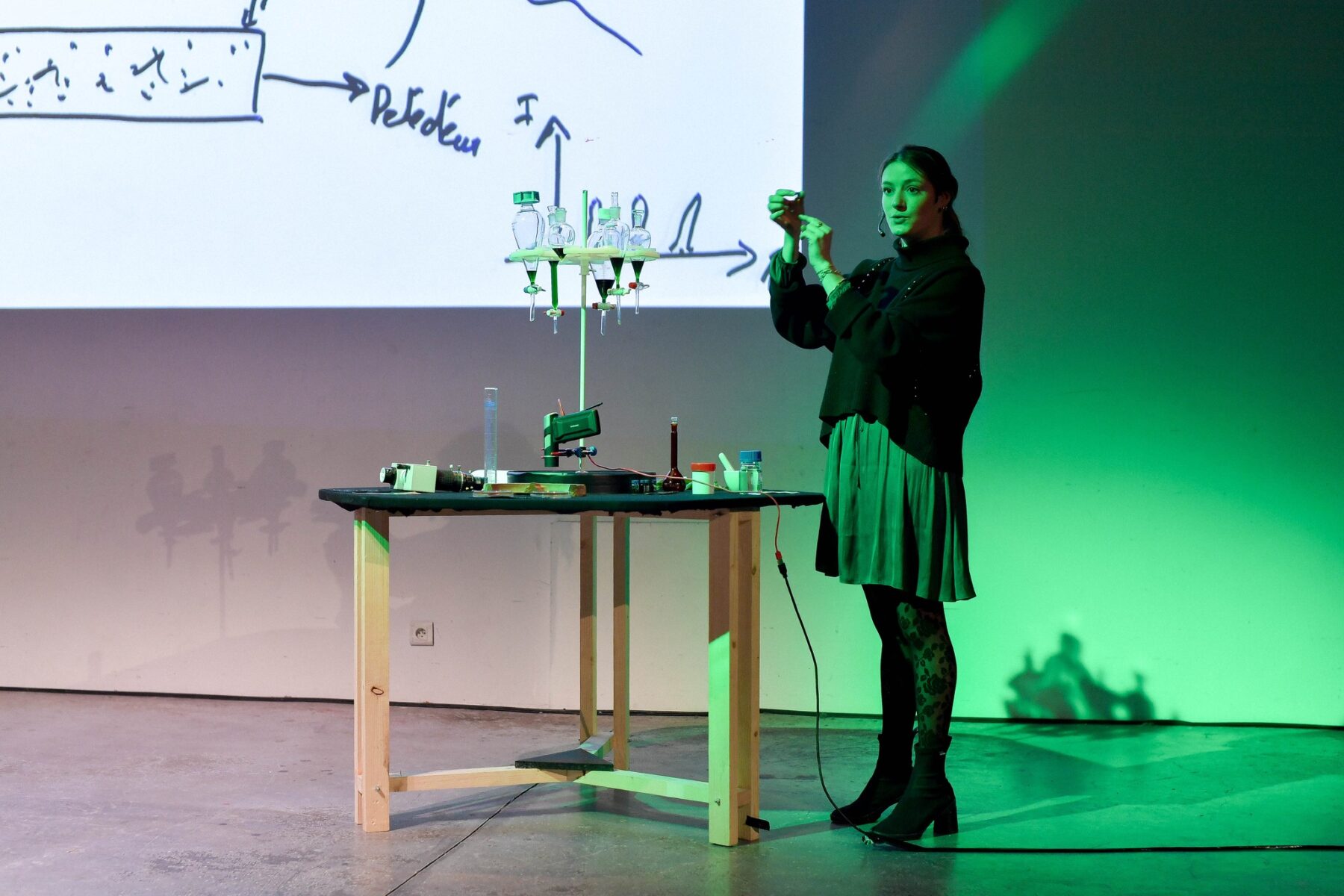
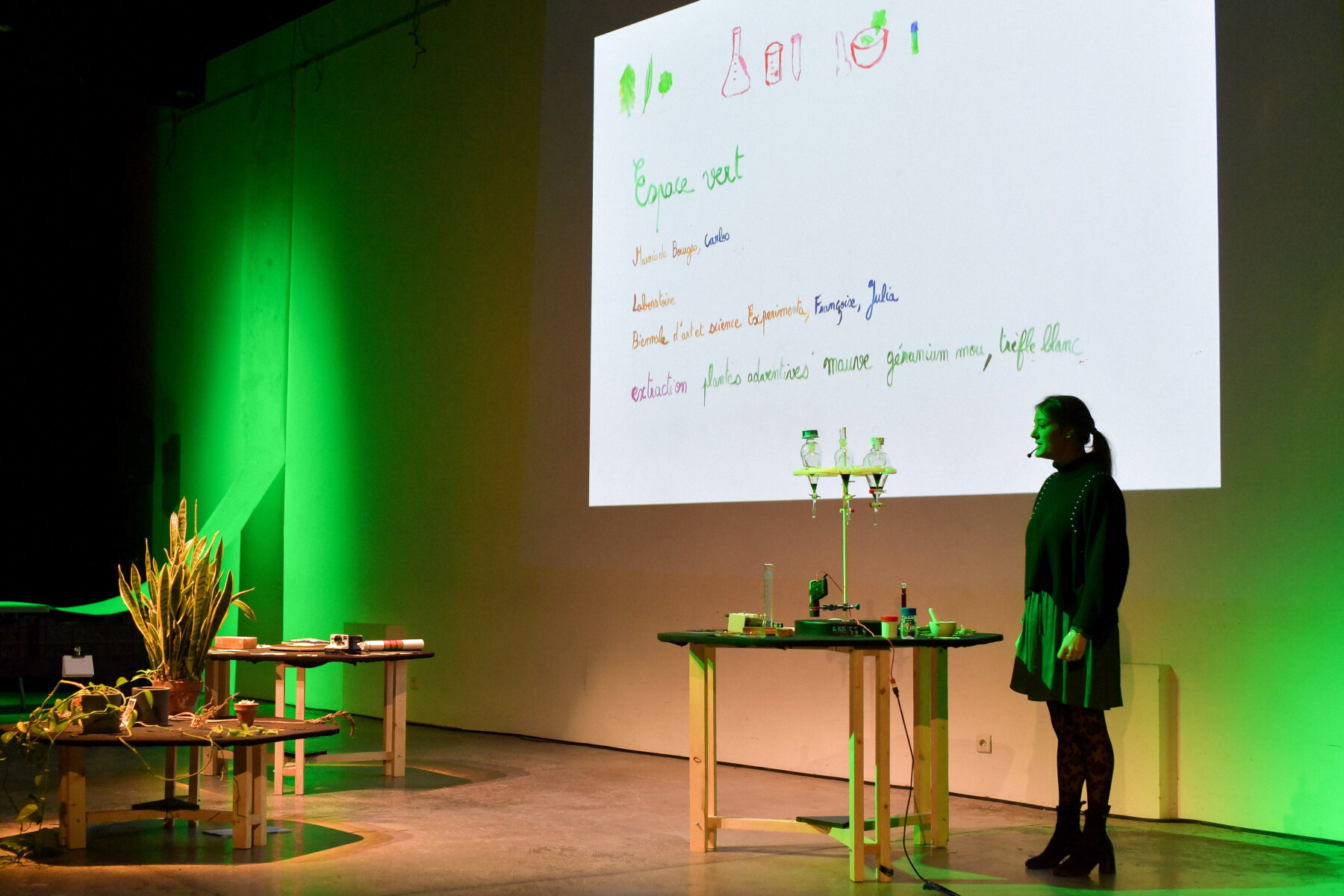
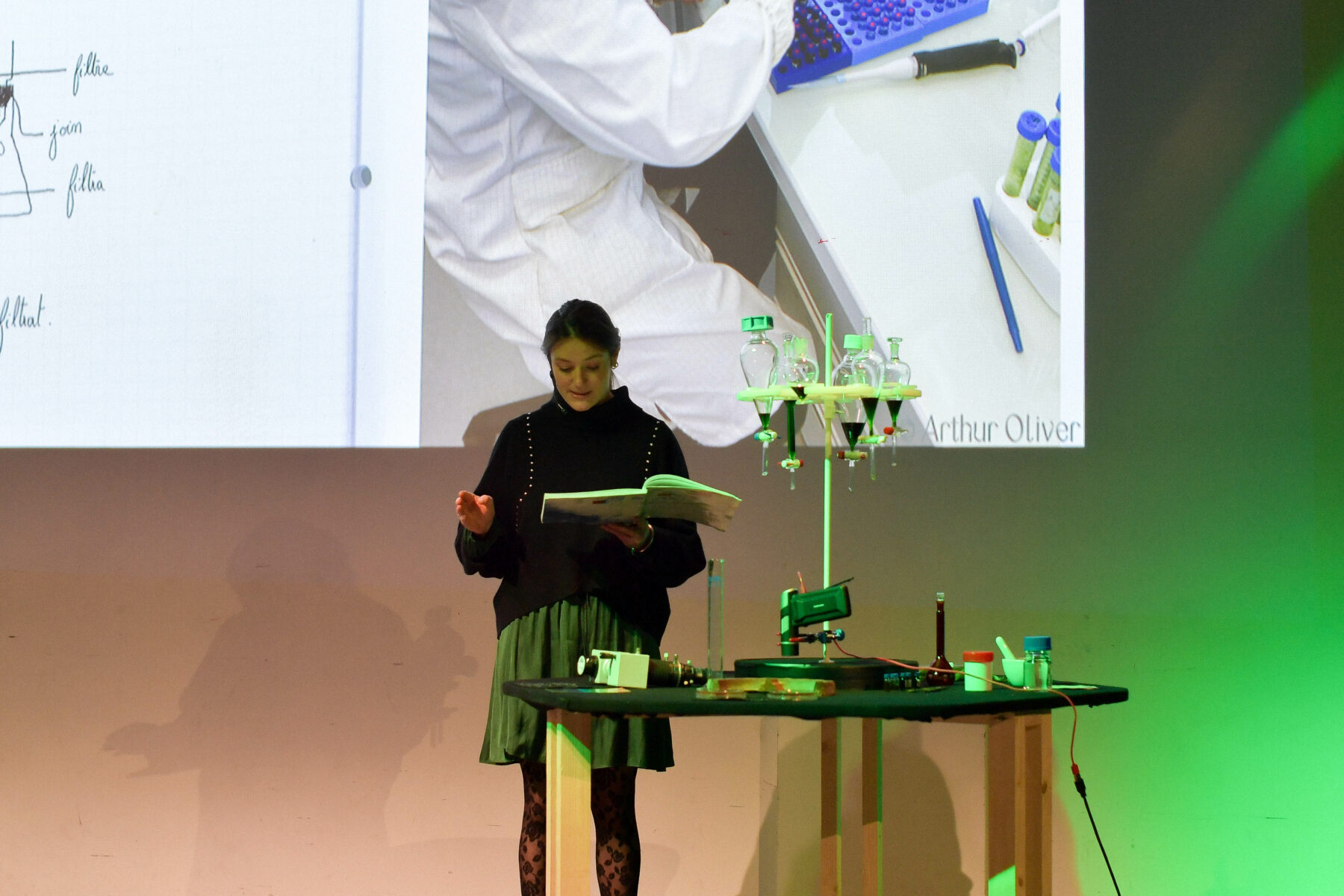
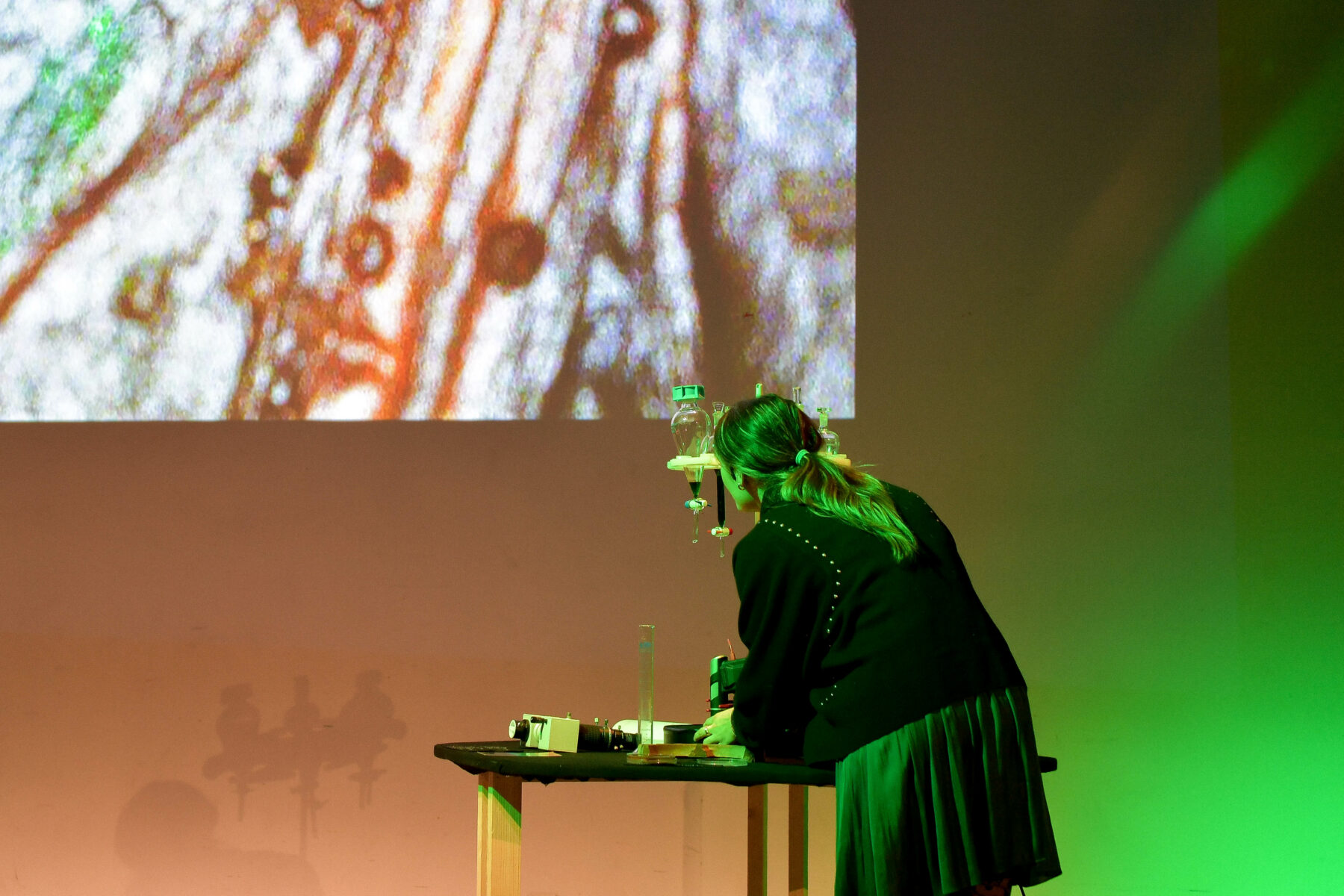
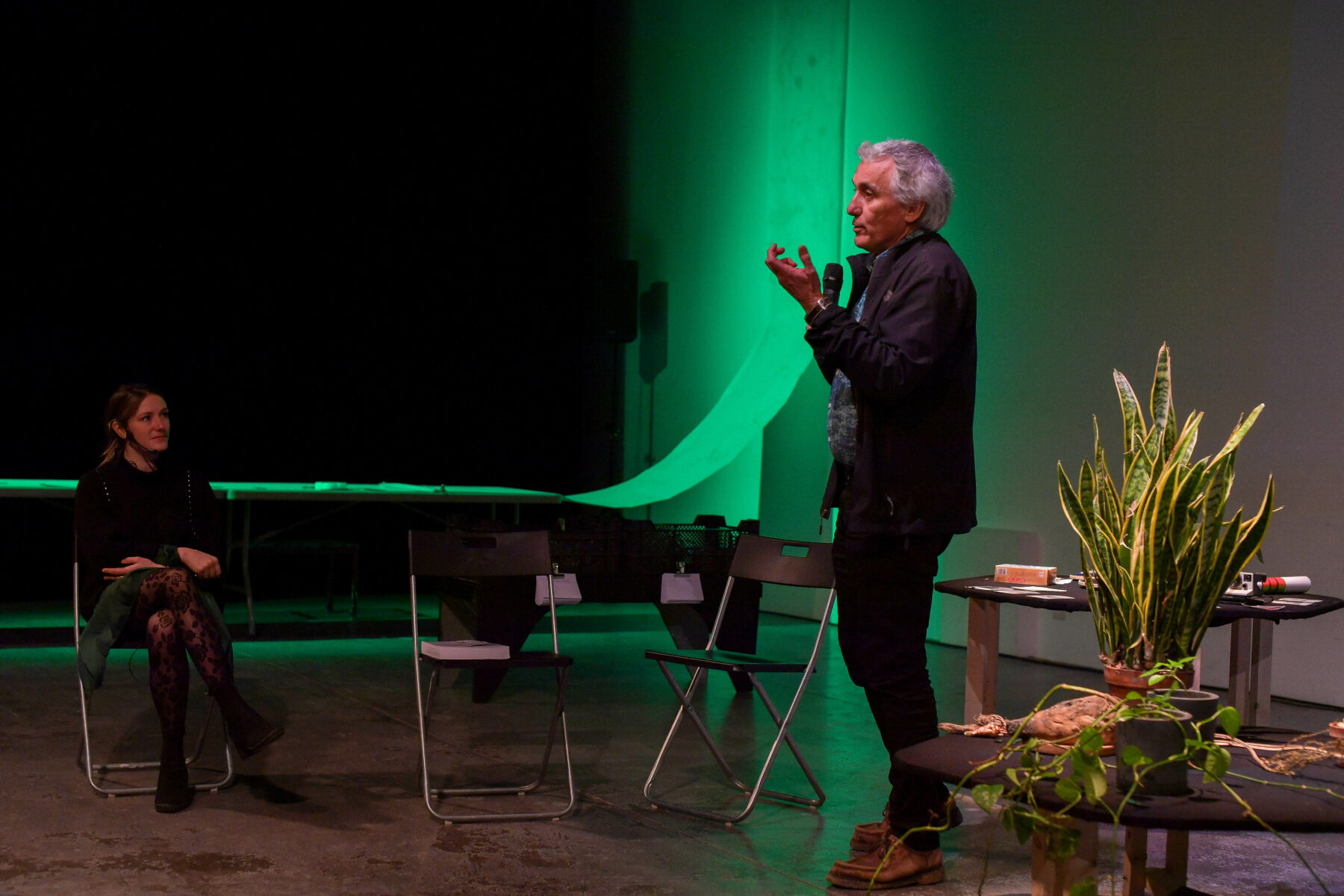
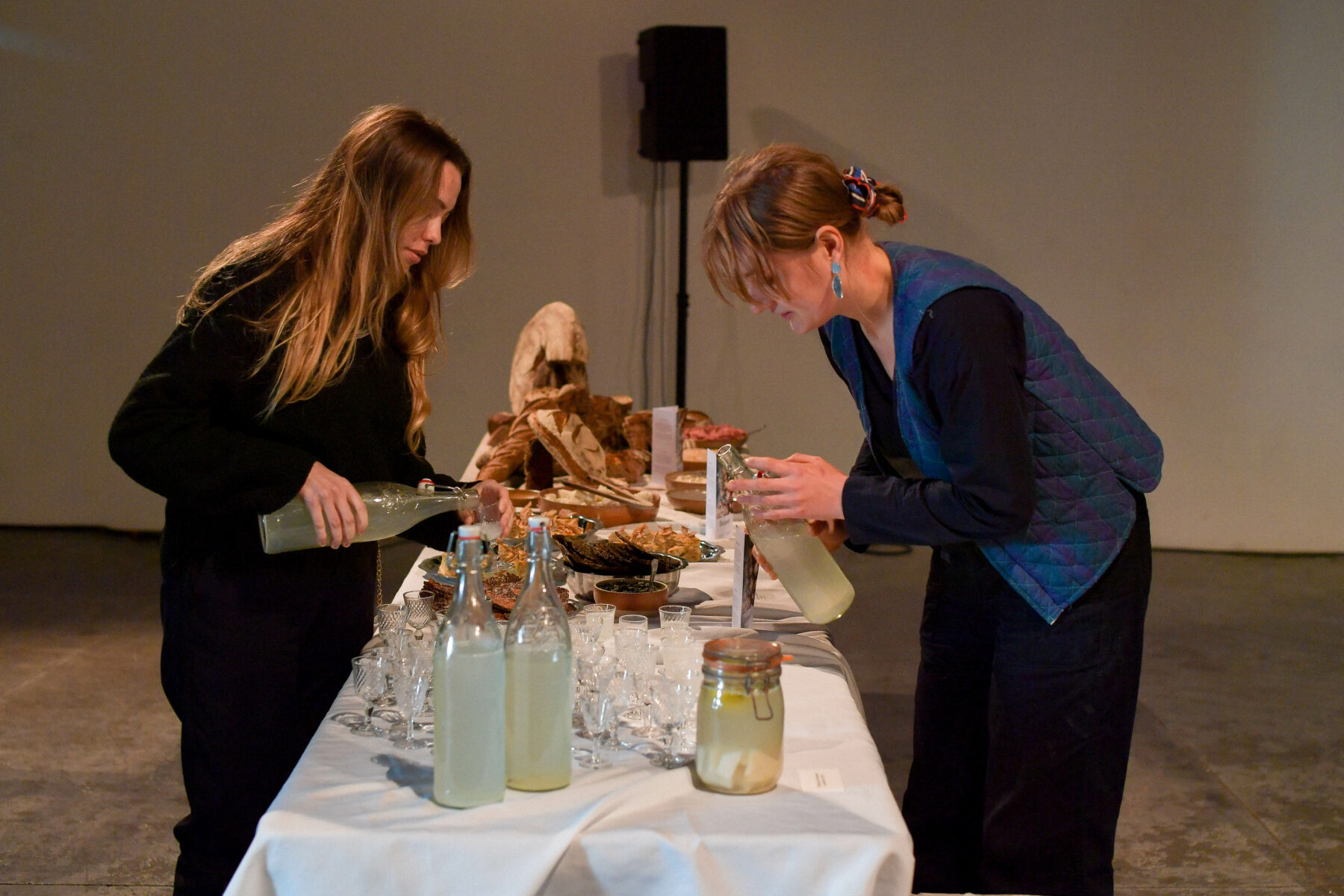
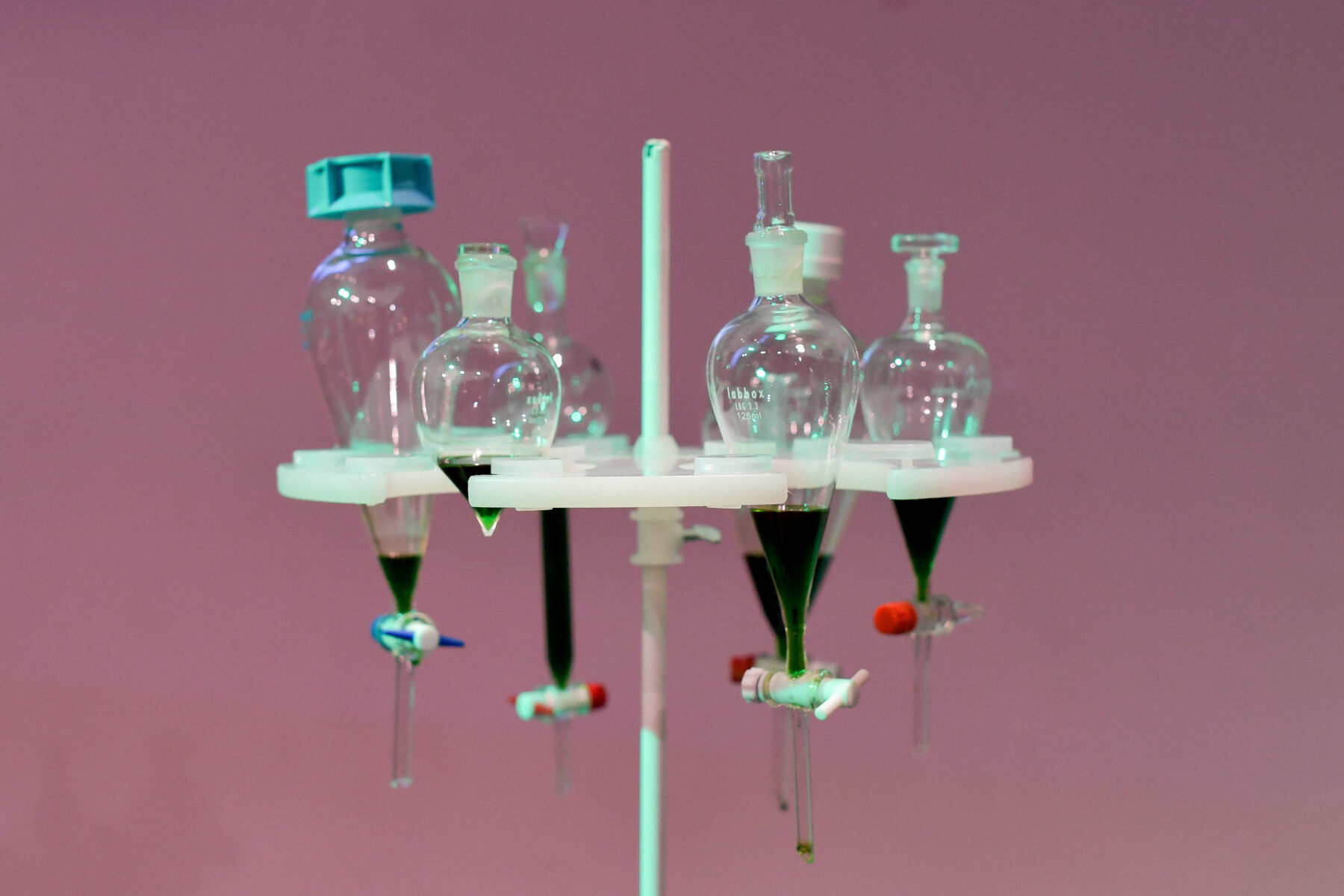
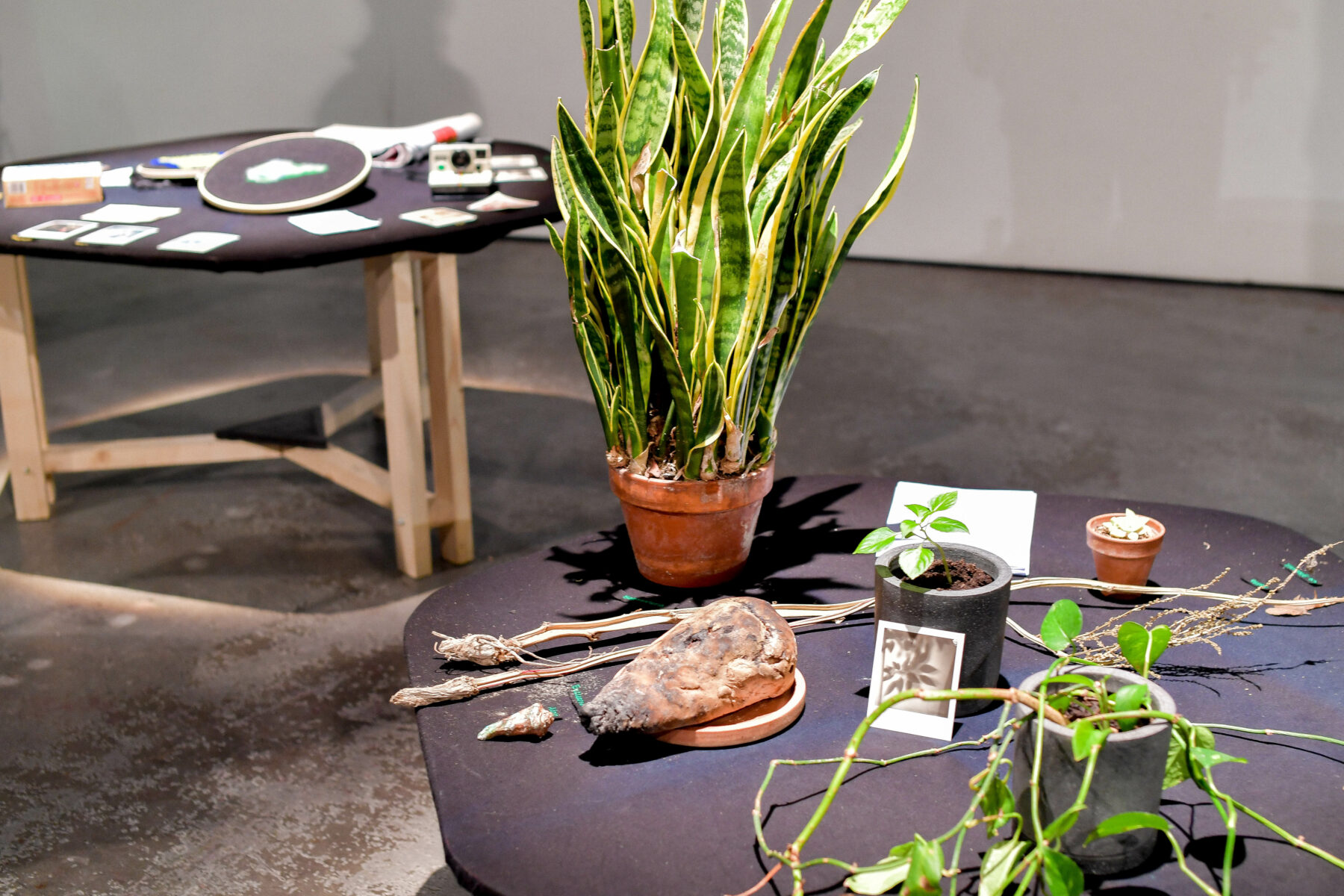

Anouk Daguin
Artist, doctoral student and gardener | École polytechnique “Multi-worlds – Sensitive interaction of the living sphere”, 2020 – 2023
In thesis at the École Polytechnique within the Arts & Sciences Chair and the LGPM laboratory of Centrale Supélec – Université Paris Saclay, Anouk Daguin explores, through participatory projects, the way in which links are forged between humans, plants and microorganisms
The aim of the project La richesse des bavardages ordinaires is to create situations of encounter through the familiar presence of plants and the use of strange, even intimidating, scientific processes and instruments.In these banal conversations, the birth of moments of sharing and encounter is at the heart of the practice. The places where these conversations take place are unusual, like Alain’s farm shed in Bazancourt or Pierrette’s bedroom, a resident of a home for the dependent elderly (EHPAD). In some cases, past encounters give rise to new ones, as when I invited Alain to take part in my course for students at the Beaux-Arts de Reims art school,introducing the other to his world. These chats in nursing homes, hospitals, art and science institutions and associations give rise to intense moments of communal sharing of lifestories, portraits, family photos… These chats reveal the inner richness and diversity of each individual. They enable the exchange of experience, knowledge and, in my work in particular, scientific gestures, just as in the old days a common history was created by doing things together, by engaging our bodies and senses, lighting the wood fire, kneading the dough and then tasting the bread together in front of the communal oven. April 2022, 7:09 a.m., Bazancourt train station; Alain picks me up with his tractor, heading for the field next to the soccer field. January 2020, Franprix supermarket, Saclay plateau, I meet Victor, a roadman, by chance,we eat a sandwich, he tells me about his job… Bordeaux, September 2020,EHPAD, nursing home, Terre-Nègre, second floor, I meet 95-year-oldresident Jeanne, she tells me about her old apartment and how she waters the plants in her courtyard. October 2021, I arrive for my first day at the Centre Européen des Biomatériaux et Biotechnologies in Pomacle, where I receive my laboratory notebook and meet Cédric, who passionately explains how the High-Performance Liquid Chromatograph (HPLC) works. Each of these encounters is an artistic act, the slow building of a relationship, the taming and waiting for the Fox and the Little Prince.The retranscription of this work in common, the collection of drawings,photos, spectrograms or laboratory notebooks constitute the material for the installations, which invite visitors to take part in this art in common, and to start a conversation with me or with each other.Thus, this thesis defends the proposition that encounters, the banal and shared gestures make art, and in my work this commonality encompasses science, agriculture, botany and gastronomy, in a form of recursivity of public renderings constructed as a new protocol of encounter, a reiteration. This manuscript invites the reader to enter this time of encounter and make common cause with the plants, machines and humans that populate this work: cyclamen, peace lilies, pelargonium, beet, phase-contrastmicroscopes, spectrographs, elderly people, farmers, researchers… The aim here is to make room for the other and to transcribe this situation of mutuallistening, to bring the reader into the intimacy of these relationships. The scientific instruments, their extended sensorium that enables us to perceive the world differently, and the scientific concepts form the territory of the encounter, and appear in the background of the manuscript. The analytical part of this work is also addressed through humanities researchers.